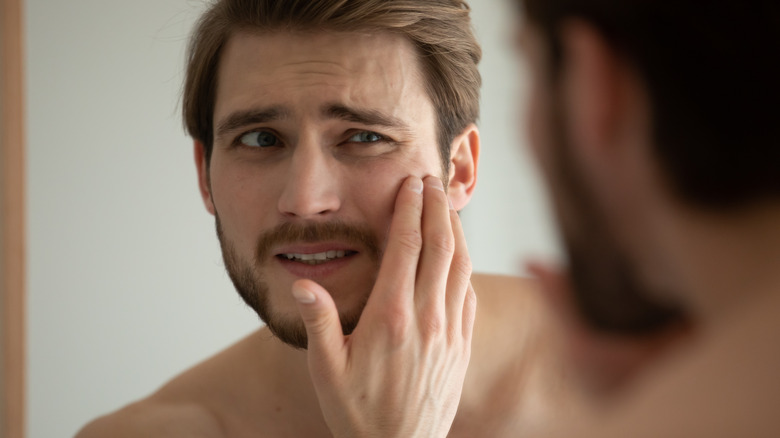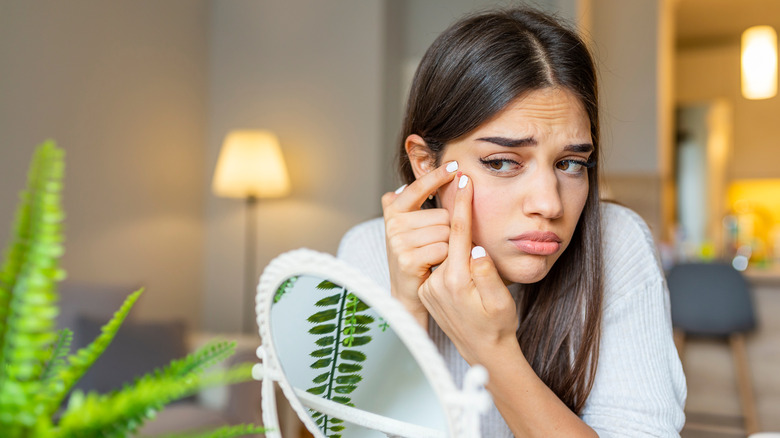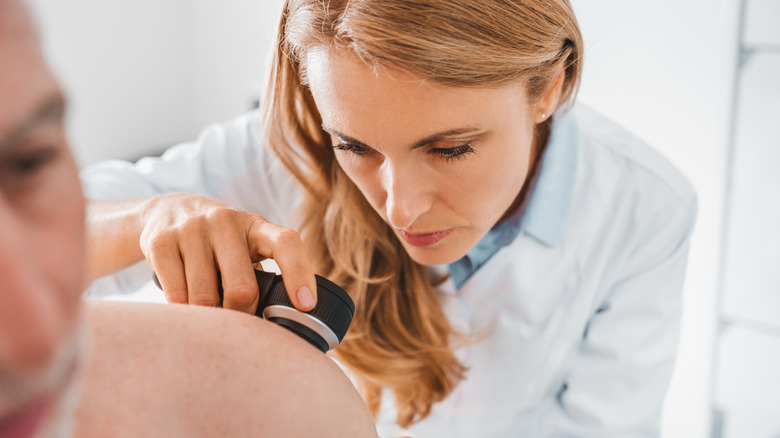Why You Should Never Pop An Ingrown Hair
Hair removal is common among men and women, but it can also have painful consequences, such as ingrown hair. These are swollen bumps that are formed when hair curls and grows back into the skin instead of growing outward from the skin's surface. They're found in areas of the body that are regularly shaved or waxed, such as the face, armpits, and legs. Ingrown hairs tend to appear as small bumps resembling blisters but can also be pus-filled.
They're also common in people with tightly curled or coarse hair since hair types are more likely to curl back and grow into the skin instead of growing straight out of the follicle, according to the experts at WebMD. Generally speaking, ingrown hairs can be painful and irritating, leading to the temptation of itching or popping them. However, popping an ingrown hair comes with its own headaches, hence why it's usually discouraged.
Why it's best not to pop an ingrown hair
As mentioned before, ingrown hair may cause irritation and itching. When you attempt to pop or scratch the hair, you may introduce bacteria and dirt into the area, which can increase the risk of infection, explains the Cleveland Clinic. Plus, it can cause a wide range of negative symptoms, including pain, swelling, fever, and even sepsis in severe cases. In addition to an infection, scratching or attempting to pop an ingrown hair can cause scarring. This can be especially problematic if the ingrown hair is located in a highly visible area, such as the face or neck.
Overall, it's best to avoid touching or messing with any ingrown hairs. In fact, with patience and proper care, most ingrown hairs will resolve independently without causing lasting damage to the skin. However, if the ingrown hair is causing significant discomfort or other symptoms, it's best to seek the advice of a dermatologist.
How ingrown hairs are treated
If you see an ingrown hair near the skin's surface, it's best to reduce the inflammation around the skin by applying a warm compress to the affected area for around 10 to 15 minutes. In addition, you can also exfoliate. Exfoliating the affected area can help remove dead skin cells and free trapped hairs. Start by soaking a clean washcloth in hot water and wring out the excess water. On the other hand, you can also use a gentle exfoliating, soft-bristled brush to massage the area.
Over-the-counter creams and ointments containing benzoyl peroxide might come in handy to reduce the ingrown hairs that turn into cysts (via Healthline). Keep in mind, since ingrown hairs could become infected and eventually lead to pus, redness, or pain, a doctor or dermatologist may need to prescribe antibiotics or other medications to help clear the infection and prevent complications.



